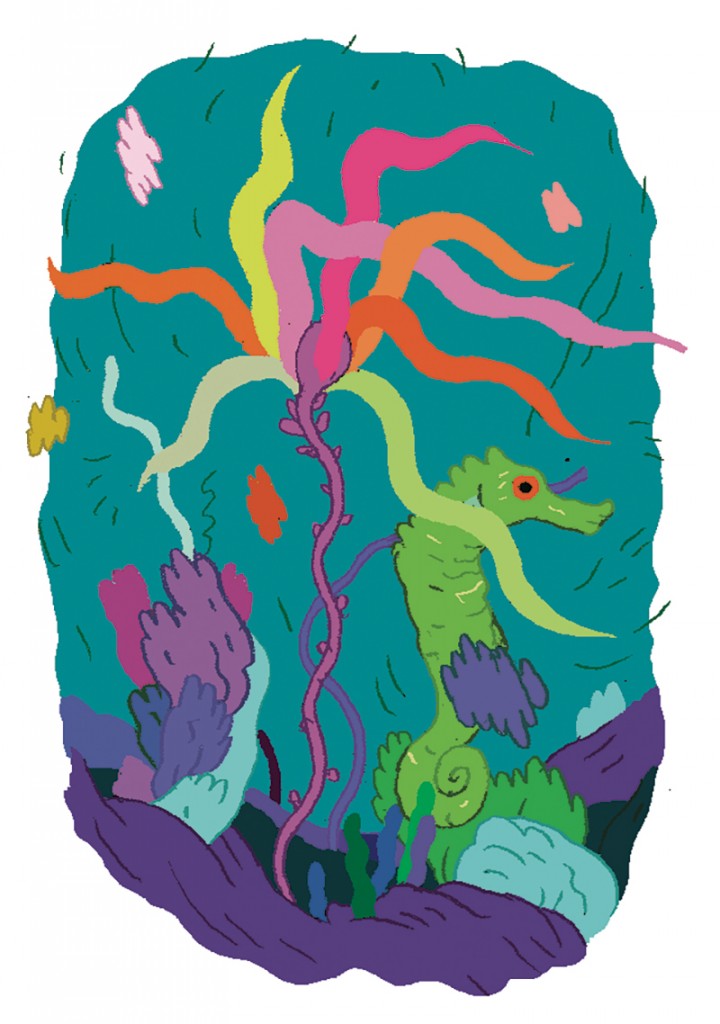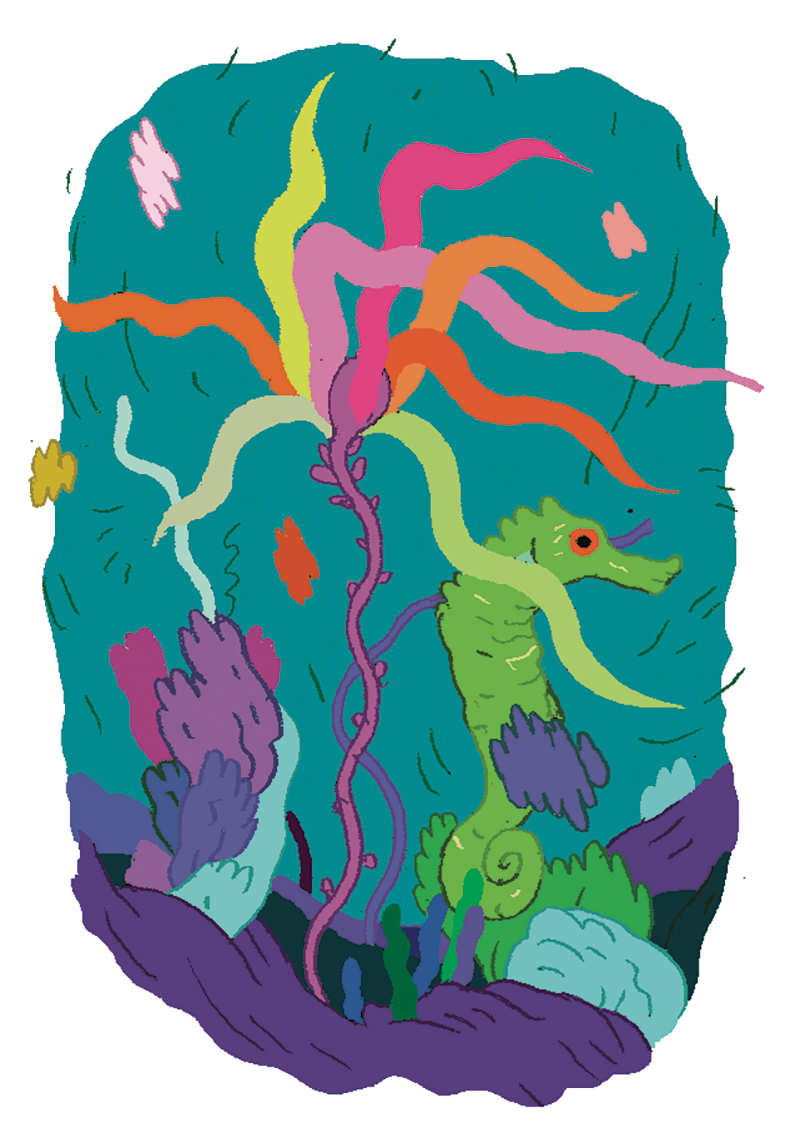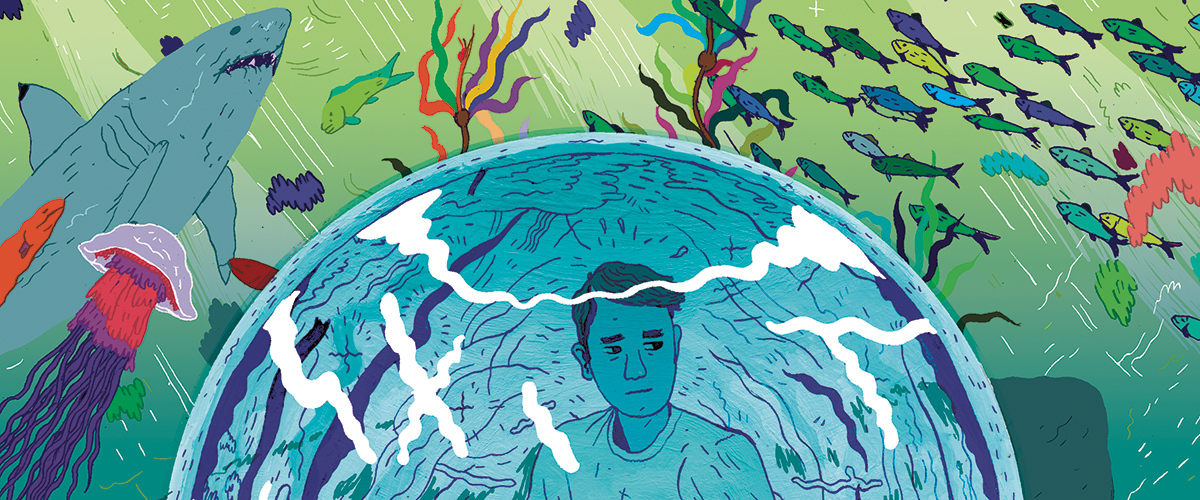Sue Davis, associate professor of political science, claims she’s pretty good at failing. She also says she’s living proof that in most cases, you won’t die from making a mistake.
Davis flunked out of college on her first attempt, failing both physics and calculus several times as a mechanical engineering major at the University of Minnesota—none of which prevented her from successfully completing a degree in political science years later, earning her Ph.D. from Emory University, writing a book about the Russian Far East, and becoming chair of her department at Denison and a well-respected scholar in her field. Nowadays, Davis shares her undergraduate travails with her students to help them understand that setbacks need not be fatal. Had she not failed as a mechanical engineering major, she may never have discovered that she would thrive as a political scientist. “As long as you own your mistakes and learn the lessons, they’re not going to keep you from doing the things you want to do,” she says.
That’s something many college students—at Denison and at schools across the nation—need desperately to hear. For just as anxiety disorders are on the rise among the general population, so too have fear of failure and aversion to risk become increasingly common, especially among Americans.
“Fear of failure is a serious problem”
It’s an odd situation, given the overt glorification of risk in American society at large. Several recent books, including Brilliant Blunders: From Darwin to Einstein—Colossal Mistakes that Changed our Understanding of Life and the Universe, by astrophysicist Mario Livio, and The Upside of Down: Why Failing Well Is the Key to Success, by journalist Megan McCardle, paint defeat as the engine of progress. So do many entrepreneurs, most notably those in Silicon Valley, a place where failure is a badge of honor, and lack of the same indicates that you aren’t taking enough risks. It’s an attitude supported by the work of Gregory Berns, a neuroscientist at Emory University who argues that fear of failure is one of the greatest impediments to innovative thinking (see Iconoclast: A Neuroscientist Reveals How to Think Differently), and by any number of management gurus. As Stanley M. Gully, associate professor of human resource management at Rutgers University, once told a reporter for The New York Times: “In most personal and business contexts, if you avoid the error, you avoid the learning process.” Failure, we are told, isn’t just something to be weathered; it is a catalyst for greater understanding, and a prerequisite for success.
Yet for all that, many Denison faculty and staff believe that fear of failure is actually on the rise among students. And that is a serious problem, insofar as a liberal arts education aims to cultivate new ways of thinking, to challenge preconceived notions, and to spur intellectual and personal growth—all of which entail taking risks of various kinds, and all of which involve, if not demand, repeated failure.
There are many reasons for this mounting level of anxiety in the face of anticipated failure, from parental hovering to the college admissions process. And given its deep and tangled roots, it is unlikely to disappear anytime soon. But those same faculty and staff who lament the fear of failure also are actively engaged in helping students overcome it.
The growing timidity of students derives in part from an increasingly competitive college admissions process, and from what Davis and Denison President Adam Weinberg both describe as a commonly held myth: that without perfect high school grades and the perfect extracurricular profile, you will never get into the college of your choice. That myth, which is reinforced by well-meaning parents and teachers from middle school onward, is only exacerbated by a precollegiate emphasis on high-stakes testing that inevitably focuses the mind on nailing the correct answer on the first try. And it provides a powerful incentive to play it safe.

Rising levels of performance anxiety among new arrivals on college campuses may also be related to broad social trends such as “helicopter parenting” and the self-esteem movement. The argument goes like this: Take a society in which success is defined by winning; add excessive parental hand-holding right through early adulthood; stir in the sneaking suspicion that children must be praised at every turn and spared the trauma of failure at all costs; and you wind up with a generation of students whose self-esteem is tied to their performance, yet who lack the coping skills required to overcome the shocks that life will inevitably deliver. Or as Associate Professor of Biology Thomas Schultz puts it: “Our kids are set up both to have all this pressure to do well, and to have this safety net when they don’t.”
There is good evidence to support much of this, and good evidence to suggest antidotes, as well—antidotes that many in the Denison community already are supplying.
Much of what we know about how people respond to setbacks comes from the work of Stanford University psychologist Carol Dweck. Over the course of several decades, Dweck has refined a theory that posits two very different ways of thinking about ability: a fixed mindset, which is characterized by the belief that one’s abilities are static and innate; and a growth mindset, which is characterized by the belief that one’s abilities are malleable and subject to improvement through effort. People who hold a fixed mindset tend to view failure as a threat to their self-image. They are concerned primarily with outcomes and performance, and they are more likely to give up when faced with setbacks rather than persevering in search of new and better strategies for success. They also tend to stick to what they already do well, abjuring challenges that might make them look bad in the short term, but that could help them flourish over the long haul. People with a growth mindset, on the other hand, tend to be more resilient: they regard mistakes as learning opportunities. They are concerned primarily with the process of figuring out how to solve problems, and they are motivated, rather than cowed, by failure.

Dweck carried out most of her early research with young children; one of her best-known studies, for example, found that elementary school students who were praised for their intelligence rather than for their effort were more likely to give up when they encountered setbacks—a result she attributed to the fact that praising a child for being smart rather than for trying hard encouraged the development of a fixed mindset. (The opposite also appeared to be true.) Dweck and others also have performed studies suggesting that a growth mindset can be helpful to college students. And they have demonstrated that such a mindset can be cultivated through interventions that encourage students to think of their abilities as flexible and amenable to improvement. Denison faculty members don’t take seminars on Dweck’s theories, but it’s striking how much of what they do seems designed to help their students develop a growth mindset nonetheless.
Many faculty talk about the students who come to their classes wanting to know exactly what they need to do in order to get an A, and about their own attempts to get students to focus instead on developing broadly applicable skills that will help them tackle a wide array of problems (e.g., reasoning by analogy, and formulating and testing hypotheses). Davis, for example, immediately begins to chip away at the very notion that there is a single solution to most problems. In her class on Russian politics, for instance, she asks students to write a paper describing those junctures in the country’s history that are most important to understanding it today, and she then has them compare their results so that they can see how others were able to do well even though they made entirely different choices.
Over in the biology department, Schultz drills into his students the idea that science is not so much a body of knowledge as a way of thinking—one in which all understanding is provisional, any theory is only as good as your last experiment, and failure is what leads to discovery. He does that in part by relentlessly forcing students to focus on the scientific thought process itself, rather than on its endpoint. If an experiment fails to produce the expected result, for example, Schultz immediately turns the students’ attention to understanding why, and to the insights that can be gained from an unanticipated outcome. “Initially in science, it’s a lack of understanding something that prompts new ideas and new exploration,” he says. He also often asks students to come up with questions for an impending exam, and then has them pose those questions to the entire class and grade one another’s responses, providing a rationale for their evaluations. Over time, Schultz says, that kind of process-oriented exercise helps students shift from concentrating on what they know to how they think. It also makes them more comfortable with uncertainty, and enables them to take risks that they would previously have avoided.
“Schultz drills into his students the idea that science is not so much a body of knowledge as a way of thinking—one in which all understanding is provisional, any theory is only as good as your last experiment, and failure is what leads to discovery.”
Like Schultz, Dance Professor Gill Wright Miller ’71 constantly prods students to focus on the learning process rather than on outcomes. In her somatics classes, for example, students are introduced to a series of basic movement patterns, then asked to use those patterns to figure out how to perform a physical feat they couldn’t previously manage, such as exceeding a personal weightlifting record or diving headfirst into a swimming pool. It isn’t unusual for students to fail at their self-appointed tasks within the narrow time horizon of a single semester—Miller even strings together a blooper reel of their most spectacular failures, including collapsing handstands and high-speed balance-ball wipeouts, all set to the Kelly Clarkson song, “Stronger (What Doesn’t Kill You).” But Miller gives full credit to those who can describe what they were trying to do, how they were trying to do it, and why they failed, along with a strategy for succeeding, given sufficient time. It’s an approach that’s so systematic, one might even call it scientific. “For the past 30 years, I’ve said that the arts and sciences approach things in similar ways,” she says. “There’s a lot of trial and error, and there’s a lot of respect for the error.”
The kind of resilience that Davis, Schultz, and Miller all strive to encourage can be learned outside the classroom, as well. One of the principal tenets undergirding the Denison experience is that curricular and cocurricular activities complement and support each other, enabling students to develop skills that can be transferred from one domain to another. And one of those skills, says Weinberg, is perseverance itself, a skill that can be acquired through the myriad cocurricular pursuits in which so many Denisonians are engaged. Sports, for instance, provide famously fertile ground for learning to cope with defeat—in part because, as Associate Professor of Athletics Brian Hortz ’94 points out, “you can fail over and over,” and in part because you can do so in ways that are so painfully obvious.

Head swimming coach Gregg Parini typically sees three reactions among student athletes for whom failure is a particularly terrifying prospect: catatonia, or freezing up like a deer in the headlights; redlining, or getting worked up to the point where hyperventilation and a racing heart degrade one’s physical performance; and false bravado, in which one takes spectacular risks that basically guarantee a disastrous outcome. Unpacking those responses is more a psychological exercise than a physiological one: Coaches must dig deep in order to determine why students are freaking out, then help them understand how they are undermining their own success. But there are specific tools, such as relaxation and visualization techniques, that training staff can teach students to help them calm themselves and conquer their anxieties. And in its emphasis on drills and practice, says Hortz, athletic training naturally offers students the opportunity to achieve mastery in small steps, building confidence in their ability to succeed regardless of their fears.
Persuading people to step outside their comfort zones can be slow going, however, especially when you’re dealing with deeply entrenched attitudes that are shared by an entire team. Years of second-place status, for example, meant that it took Parini nearly 14 years to shift the mentality of the women’s swim team to the point that the swimmers were able to capture a national championship. It took nearly 24 years for the men’s team to do the same. “It’s exciting to see,” Parini says. “But sometimes it works in geologic time.” And it might not work at all, says Associate Professor of Philosophy Mark Moller, without a good deal of spadework on other fronts.
As dean of first-year students, Moller sees a lot of nervous young people filing onto campus each year. And he has come to believe that before students can take the kinds of risks that faculty and administrators want them to venture—before they can move beyond their own perceived limitations, explore unfamiliar subjects, and open themselves up to the diversity of thought and experience on the Hill—they must first get past the overwhelming pressure they feel to fit in socially. Consequently, the principal goal of the college’s various orientation and pre-orientation programs is to alleviate that pressure by helping students build relationships throughout the Denison community.
The process begins with June Orientation (aka June-O), an optional program in the early summer that gives incoming firstyear students the opportunity to work with upperclass students and faculty to familiarize themselves with academic programs and to register for classes. The experience ensures that they will know at least a handful of people when they return in the fall. And the process continues with a series of pre-orientations (so called because they take place prior to the mandatory August orientation session, or Aug-O) that encourage participants to bond with one another by engaging in various activities under the direction of Denison faculty, staff, and student leaders: biking to Mohican State Park in Ashland County, hiking in the Daniel Boone National Forest in Kentucky, or volunteering in various service organizations in Washington, D.C.
Mentoring also plays a vital role. Some of that rests on the shoulders of faculty, who are encouraged to practice what Moller calls “intentional advising,” a form of mindful counseling that involves setting aside extra time for first-year students who may be struggling to make the transition to college life. And some of it takes place through what Weinberg calls “student-student modeling,” which occurs when first-year students get to know upperclass students through cocurricular activities and are able to see how their peers developed new skills (playing the violin, doing improvisational comedy) through effort and hard work. The extent to which such relationships can help students overcome their anxieties is by no means trivial, and jibes well with the findings of Hamilton College sociologist Daniel F. Chambliss. In his recent book, How College Works, Chambliss explores the factors that contributed most strongly to the academic success and overall college experience of a large cohort of Hamilton students and alumni: namely, the connections they established with their professors and with each other. Even one or two positive ties were found to yield measurable results.
At the end of the day, however, creating an environment in which undergraduates can build positive relationships is only part of the battle that Denison faculty and staff must wage in order to help students conquer their fears and fulfill their potential. And given both human nature and the forces at play in American society, it’s a battle that won’t be over anytime soon.
“When I got here, I was amazed at how well we were doing on this issue, and how committed people were to it,” says Weinberg. “But I also saw that the problem was getting worse every year. So we’re going to be continually challenged to up our game.”
Alexander Gelfand is a writer based in New York. His work has appeared in The New York Times, the Chicago Tribune, and The Economist.


